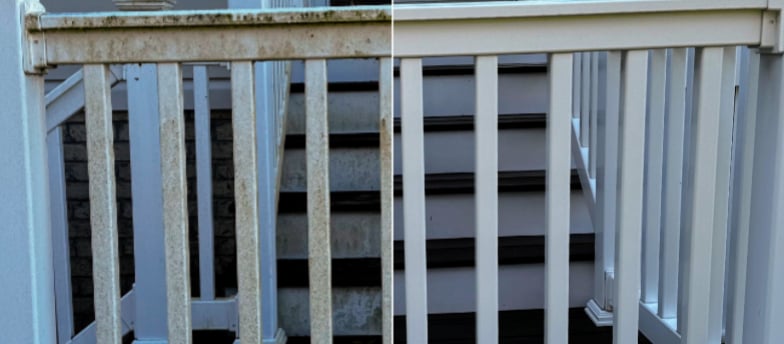10 Surfaces You Didn’t Know Could Be Pressure Washed
Pressure washing is commonly associated with cleaning driveways, sidewalks, and siding, but did you know there are many other surfaces that can benefit from a deep clean? From outdoor furniture to sports courts, here are ten unexpected surfaces you can safely pressure wash to restore their original appearance.
David Hahl
2/19/20252 min read


Pressure washing is commonly associated with cleaning driveways, sidewalks, and house siding, but its versatility extends far beyond these surfaces. Many homeowners are surprised to learn that pressure washing can safely and effectively clean a variety of unexpected areas around their property. Here are ten surfaces you may not have realized could benefit from a thorough pressure wash.
1. Outdoor Furniture
Over time, patio furniture collects dirt, mold, and pollen, making it look worn and uninviting.
Why It Works: A low-pressure wash removes grime without damaging wood, metal, or plastic materials.
Best Practice: Use a gentle nozzle setting and avoid excessive pressure to prevent damage to painted or delicate surfaces.
2. Garbage Cans
Trash bins can develop unpleasant odors and bacteria buildup over time.
Why It Works: Pressure washing removes stuck-on debris, eliminates odors, and sanitizes the bin’s surface.
Best Practice: Use a cleaning solution with antibacterial properties to maintain freshness.
3. Playsets and Swing Sets
Children’s play equipment can accumulate dirt, algae, and mildew, making it unsafe for play.
Why It Works: A gentle pressure wash removes contaminants, ensuring a cleaner play area.
Best Practice: Use a soft wash method for wooden playsets to prevent splintering.
4. Mailboxes
Mailboxes are exposed to the elements and can become discolored from dirt and mildew.
Why It Works: Pressure washing restores their appearance, whether they’re metal, plastic, or wood.
Best Practice: Use a lower pressure setting on decorative or painted mailboxes to avoid chipping.
5. Fences
Fences collect dirt, moss, and mildew, especially in damp or shaded areas.
Why It Works: Pressure washing restores the original color and removes buildup, extending the lifespan of the material.
Best Practice: Use the appropriate pressure setting for wood, vinyl, or metal fences to prevent damage.
6. Outdoor Rugs and Mats
Outdoor rugs trap dirt, pollen, and mildew, which can lead to odors and discoloration.
Why It Works: A light-pressure wash lifts dirt and stains effectively without damaging fibers.
Best Practice: Allow rugs to fully dry in the sun to prevent mold growth.
7. Boats and Boat Docks
Algae, salt, and grime can accumulate on boats and docks, leading to deterioration over time.
Why It Works: Pressure washing removes buildup without using harsh chemicals that could harm marine life.
Best Practice: Use an environmentally safe detergent when cleaning near water sources.
8. Garage Doors
Garage doors often collect dust, cobwebs, and stains from weather exposure.
Why It Works: A quick pressure wash refreshes their look and removes accumulated grime.
Best Practice: Use a mild detergent for painted doors to preserve the finish.
9. Solar Panels
Dust and dirt on solar panels can reduce their efficiency by blocking sunlight.
Why It Works: A low-pressure wash clears debris and helps maintain optimal energy production.
Best Practice: Avoid high pressure, as it can damage delicate panel surfaces.
10. Chimneys and Fireplace Exteriors
Soot, smoke residue, and algae can make chimneys look aged and unkempt.
Why It Works: Pressure washing removes buildup and restores brick or stone surfaces.
Best Practice: For older brick, use a low-pressure setting to prevent mortar damage.
Conclusion
Pressure washing is a versatile cleaning tool that extends beyond driveways and siding. From outdoor furniture to solar panels, many surfaces can benefit from a deep clean to remove dirt, grime, and organic buildup. Understanding the proper pressure settings and techniques for different materials ensures effective and safe cleaning, helping maintain your home’s exterior for years to come.
